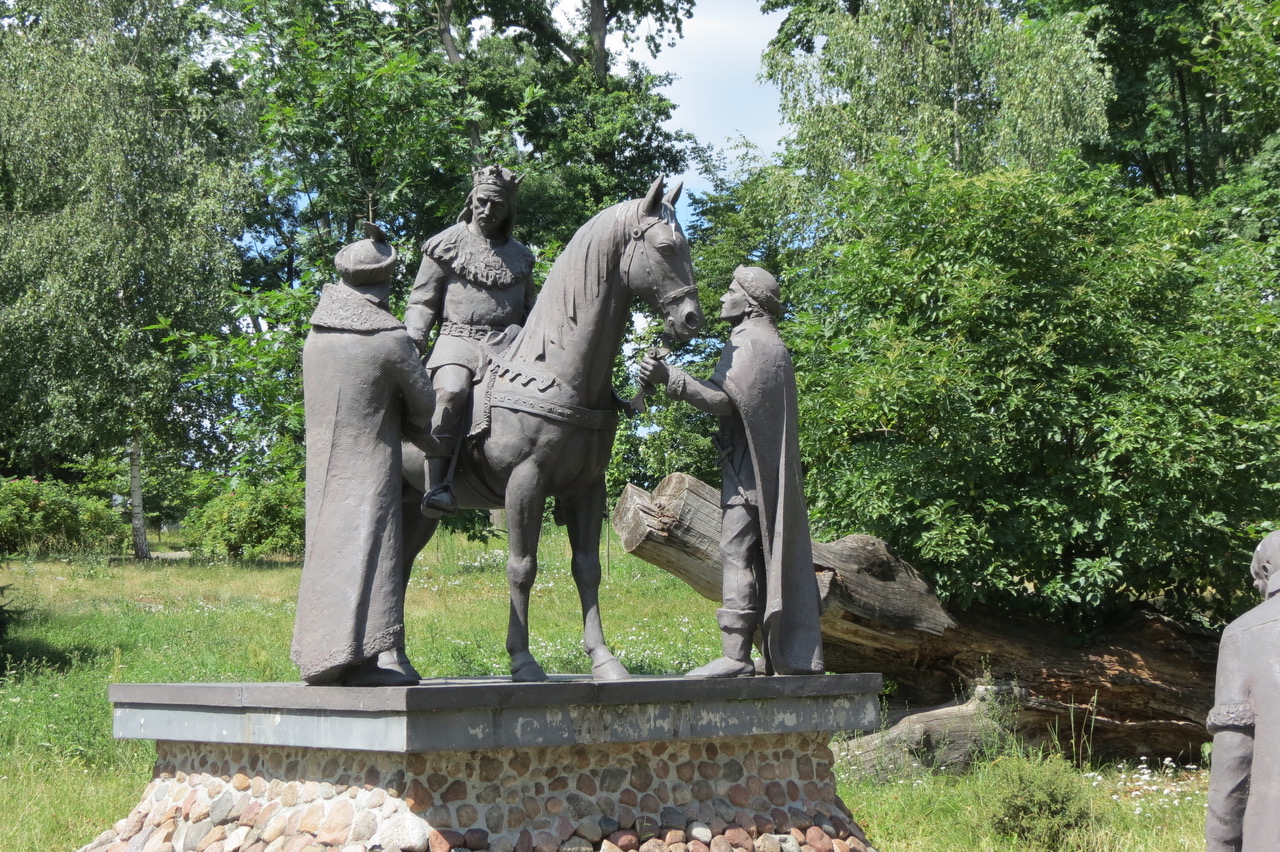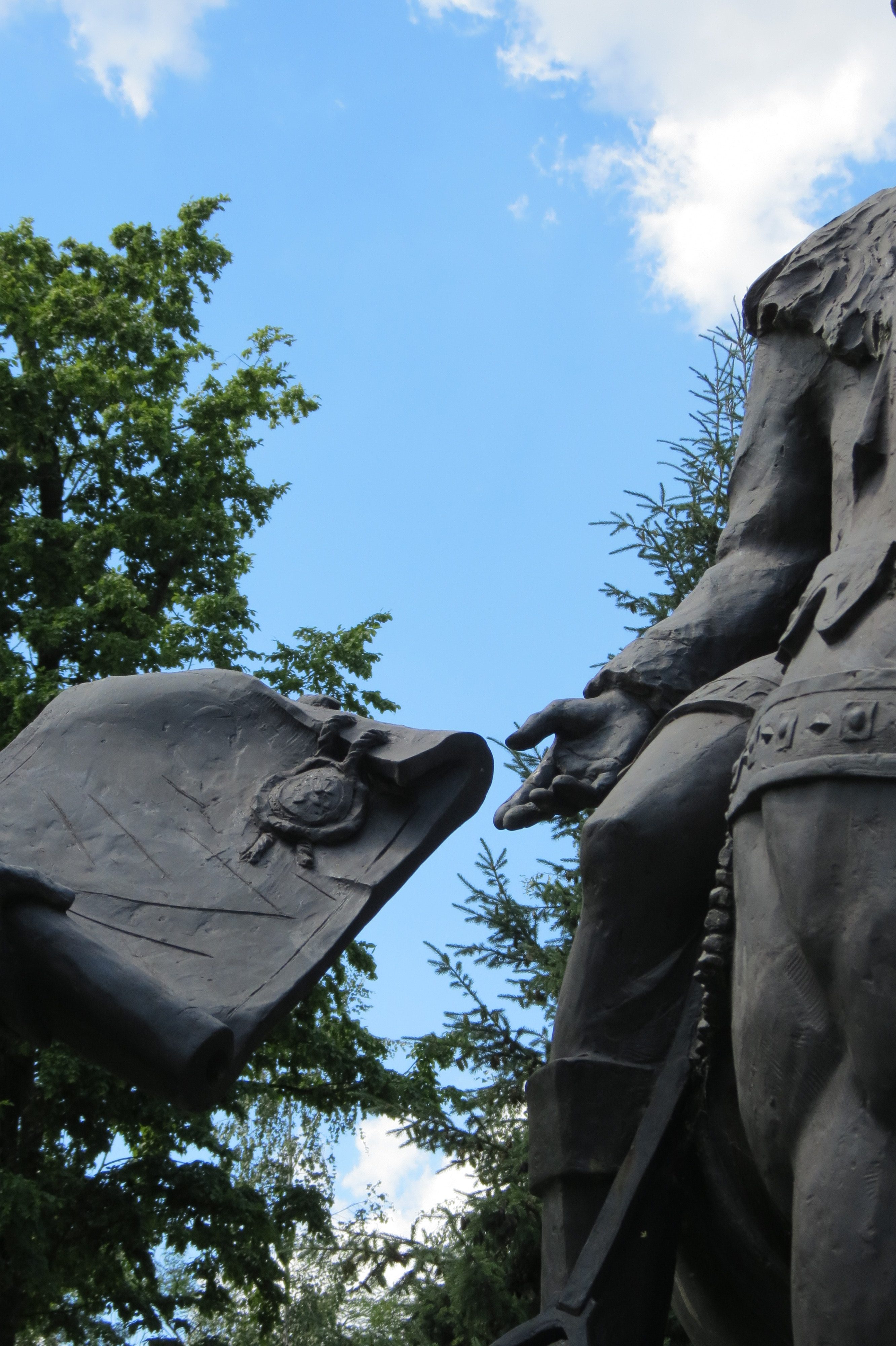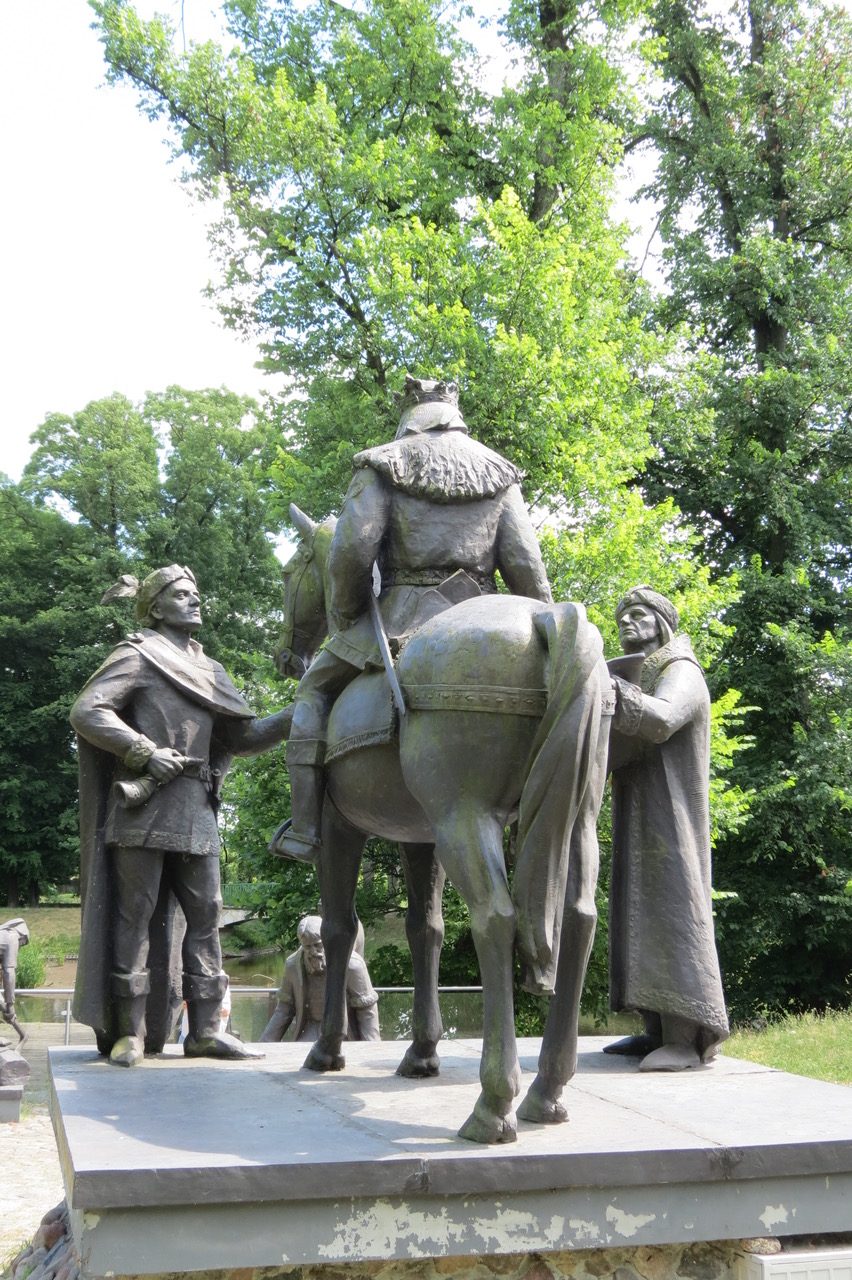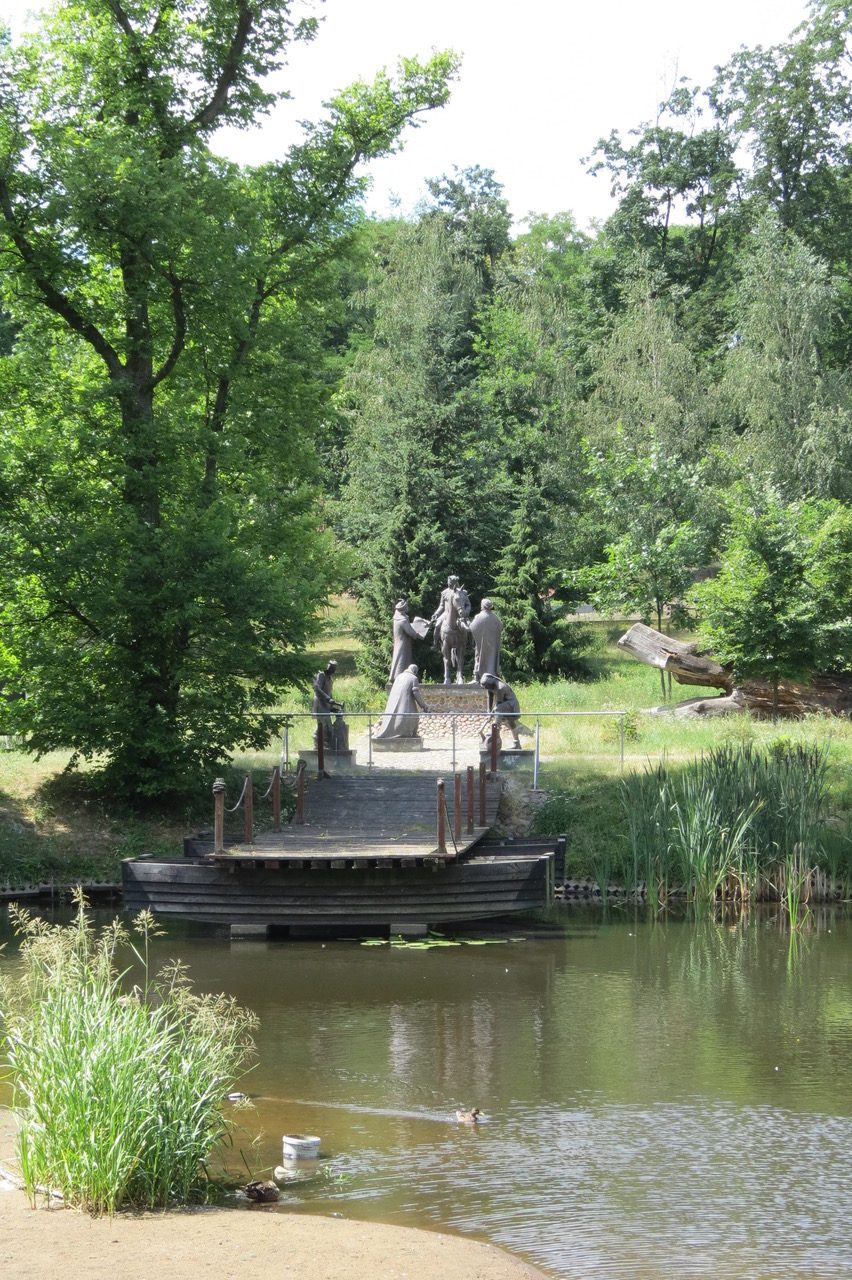An interesting multi-figuremonument shows Władysław Jagiełło visiting the construction site of the ice bridge. From the chronicles it is known that in 1409 the king ” ordered the construction of a bridge resting on boats , never seen before, and entrusted its construction (…) to Dobrogost Czarny of Odrzywo, a nobleman of the Nałęcz coat of arms. In turn, this bridge in Kozienice was built at the king’s expense, secretly a great master Jarosław, and the whole winter fell on its construction “
On a low mound covered with stones, there is a composition depicting the king sitting on a horse’s back. The bridle is held by Zbigniew Oleśnicki (the royal secretary) and the starost of Radom, Dobrogost Czarny from Odrzywo, gives Jagiello the plans of the bridge structures. The slightly distant master Jarosław bows his head in a ceremonial bow. Behind his back are two more figures – a blacksmith and a carpenter working on the construction site. A little further, two spans of the royal skating bridge were reconstructed.
Today, similar structures are in fairly common use. We call them “pontoon”. In Jagiełło’s times, they were a miracle of engineering at that time. The bridge was half a kilometer long. It was built in secret for several months. It was later floated down the Vistula river (in elements) from the area of Kozienice near Czerwińsk, and there – as Długosz recalls – on flat-bottomed boats called skates, in just half a day, a pier made of wooden logs limited on the sides by ” tree-thick resistances called “. This allowed for a quick crossing to the other side of the river, 18,000 of the Crown troops heading for a battle with the Teutonic Knights. driving, 4 thousand. infantry and 8 thousand. rolling stock cars.
Although the exact construction details of the bridge have not been known so far, specialists from the Road and Bridge Research Institute under the supervision of prof. Barbara Rymsza analyzed the materials, technologies and chronicles of Długosz that were available at that time and attempted to describe him hypothetically. Their calculations show that approximately 600 m³ of wood were used to build the 8-foot (2.4 m) wide deck. Most likely it was covered with fascine (to facilitate the passage of animals). To ensure stability, it should be supported on approx. 200 boats (skates).




















